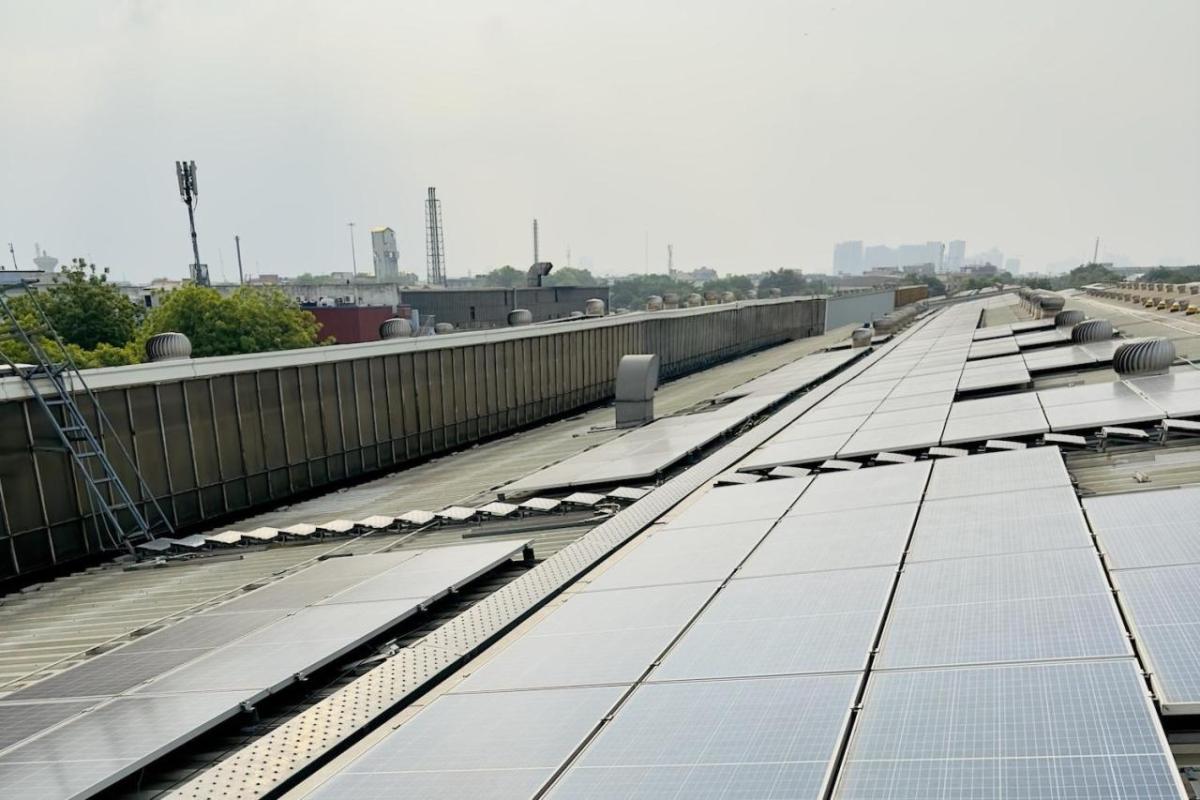Onsite Solar Isn’t As Easy as It Looks: How Manufacturers Can Get It Done
Words by Gary E. Frank
Originally published on TriplePundit
As a multinational producer of agricultural machinery and construction equipment with dozens of manufacturing and research facilities worldwide, CNH Industrial recognizes that the opportunity to reduce its carbon footprint is substantial. With that in mind, the company has mounted a highly ambitious effort to decrease the carbon emissions associated with its manufacturing processes and products.
It's an effort that is making significant progress, according to the company’s 2022 sustainability report, which shows that CNH Industrial has reduced emissions KPI by 31 percent since 2018 and now derives 60 percent of the electricity it uses from renewable energy sources.
“Our goal is to lower our carbon footprint by 2030, to reduce CO2 emissions per production hour of our plants worldwide by 50 percent compared to 2018, and to achieve 90 percent of total electricity consumption from renewable sources,” Maria Francesca Drago, CNH Industrial’s energy manager, told TriplePundit.
Part of this effort centers on installing solar panels at the company’s manufacturing sites around the world. Solar installations came online at five sites in Belgium, Brazil, Canada, India and Mexico between 2020 and 2021. Nine plants will have solar installations operational by 2024, with plans to power all plants with 100 percent renewable energy by 2030 and install photovoltaic systems on the majority of plants by 2040.
The company’s strategy utilizes existing infrastructure (roofs) to help generate renewable energy, coupled with innovative installations like solar smart flowers. And its journey offers a lesson for other businesses looking to navigate the nuances of onsite solar in order to reduce their footprints.
Onsite solar isn’t easy, but it offers real benefits for employee engagement
Coordinating this effort across a wide variety of jurisdictions brings a particular set of challenges, Drago said.
The first thing multinational companies like CNH Industrial must do is analyze the national and local laws relevant to each of their sites in order to ensure compliance. For example, India puts a cap on the maximum area covered by solar energy systems, and some states in the U.S. require solar ground installations to be enclosed. Companies also need to know if government grants or subsidies for solar installations are available.
But the biggest challenge — and the greatest opportunity — is involving global employees in these changes, Drago said.
“CNH Industrial has been looking at renewable energy for many years now. We set ambitious targets because we strongly believe we have to adopt a responsible approach based on the contribution of each employee,” she explained. “The real result comes if all of us trust in our capabilities to make the change.”
Onsite solar projects contribute to increase participation and awareness in the low-carbon transition among local employees, raising their sense of belonging to the company, Drago said. Employees at a CNH Industrial plant in India, for example, started asking for information about how to get solar panels for their homes.
The company also tries to demonstrate the impact of onsite solar by helping employees benefit directly. For example, employees at the company’s plant in Zedelgem, Belgium, can recharge their electric bikes from power generated by onsite solar smart flowers. Inspired by sunflowers, these free-standing arrays offer an alternative at plants where rooftop solar is less feasible. Although smaller, their ability to track and capture the sun’s rays via petal-shaped panels results in 40 percent more energy output for their size.
The role of onsite solar in the low-carbon transition
Bringing more clean power online while using less land is among the core benefits of onsite solar at corporate plants, said Alex Perera, deputy director of the World Resources Institute’s energy program and its corporate partnership lead for energy.
“You’re putting solar on an existing warehouse or existing roof,” Perera explained. "You’re not putting it on land, which can be difficult to site because of competing uses for that land,” such as agriculture and housing.
Further, placing power generation where it’s needed reduces what’s known in the energy sector as load pockets — or areas where local demand for energy exceeds the capacity of energy transmission infrastructure during peak times.
“New York City is a classic example of a load pocket. There’s just not enough transmission into New York City to meet all the demand,” Perera said. “Putting solar in those areas can relieve congestion.”
Beyond onsite solar: Small shifts to reduce corporate carbon footprints
Concurrent with its move toward onsite solar, CNH Industrial has a multi-year plan to scale the use of intelligent LED lighting technology to 21 plants worldwide. This smart management system includes motion sensors, dimmers and timers, which will generate up to 30 percent more energy savings than the LED technology already in place at most CNH Industrial plants, according to the company.
CNH Industrial’s decarbonization strategy also includes a shift toward a more environmentally-friendly product portfolio, including a tractor that runs on bio-methane that can be extracted from organic waste produced on farms in a closed-loop system.
Companies have a major role in scaling solar energy worldwide
Average annual investment in solar solutions needs to double from 2021 through 2030 if the world is to achieve the goals set out in the Paris climate agreement, according to 2022 research from the World Resource Institute.
“We need to raise the awareness of companies to move toward the sustainability goals so that everyone reduces their carbon footprint for the future of the next generations,” Drago said.
Indeed, these efforts will be “mission-critical,” both for businesses and the environment, in the years to come, added Perera of WRI.
“Companies will not be able to exist unless they align their business interests with climate and development objectives,” he said. “It’s becoming so strategic for companies to do this because investor pressure and consumer pressure is really mounting on companies to move in this direction. The companies that are embracing this, taking leadership positions, and trying to get out in front are going to set themselves up for success in the future.”
This article series is sponsored by CNH Industrial and produced by the TriplePundit editorial team.
Image courtesy of CNH Industrial



